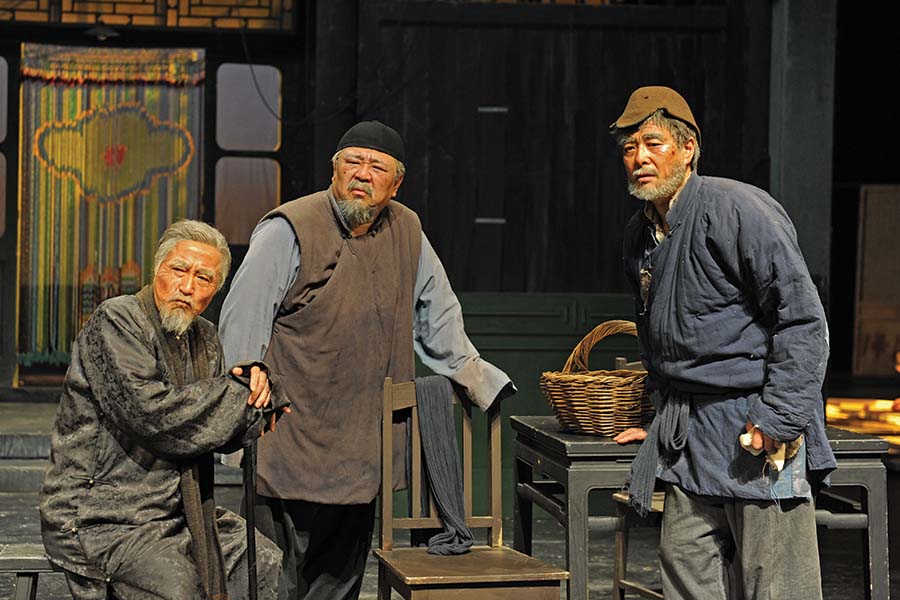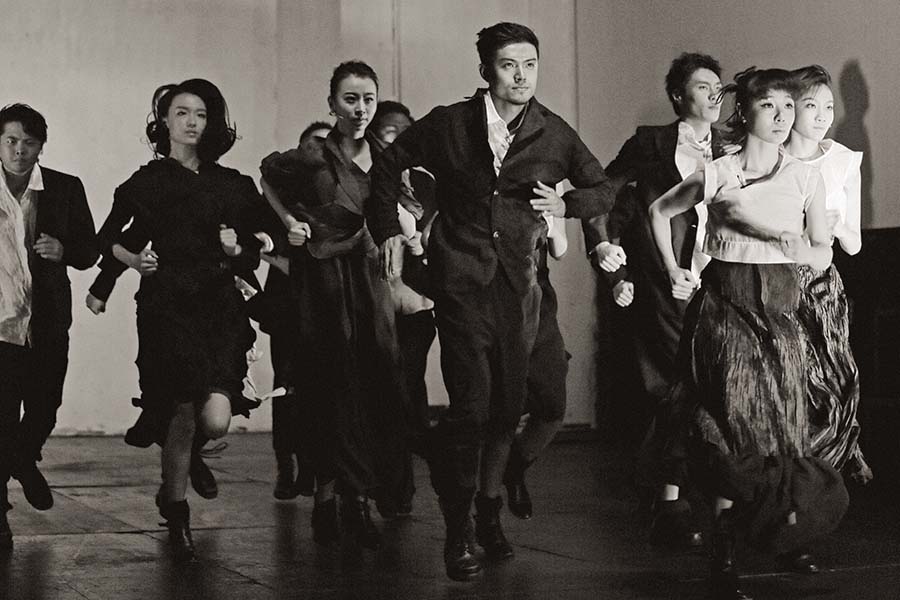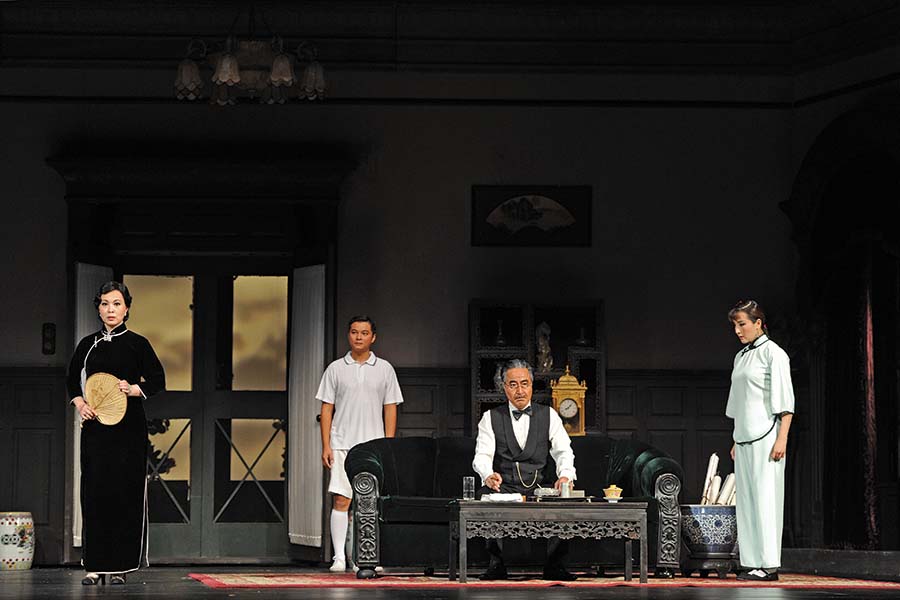The following is an edited transcript of a Theatre History podcast on HowlRound.com, in which Michael Lueger, who teaches world drama at Emerson College in Boston, conversed with Siyuan Liu, associate professor in theatre studies at the University of British Columbia and editor of Routledge Handbook of Asian Theatre.
Michael Lueger: For many of us who perform in or teach theatre, myself included, non-Western theatrical cultures are something of a blind spot. And that’s especially true when it comes to the more recent history of theatre in China. In your book Performing Hybridity in Colonial-Modern China, you examine the first form of modern Chinese theatre, wenmingxi. Also in the 20th century, a form known as huaju emerged. What do these terms mean?
Siyuan Liu: They are both forms of modern Chinese theatre, basically Western-oriented spoken theatre. The difference between the two is that wenmingxi is the first form. Wenmingxi literally translates as “civilized drama.” It reached its height at about the 1910s. It’s a hybrid form, a combination of Western spoken drama, traditional Chinese song-and-dance drama, and some forms of Japanese theatre. It’s based on the first form of Japanese modern theatre called shinpa, which is “new school drama,” and that itself is a combination of Western theatre and kabuki. It had kabuki forms of, for example, female impersonation, using male actors—and sometimes actresses—to perform female roles. There was some singing and kabuki-style dancing, and some very stylized speech and movement patterns.
So with the Chinese form, they inherited it. Some students were in Japan and then brought it back to China. Then in the 1910s, they got a really big commercial boom in Shanghai, with thousands of practitioners for a little bit of time. There was a tendency to be reliant on scenarios versus complete scripts. There was singing and dancing. The structure tended to be the traditional Chinese narrative form of telling a story from beginning to the end, versus the Western late point of attack, five- or seven-act structure, and of course female impersonation together with the emerging actresses.
That style kind of died down—although it lingered on for a long time—by the 1920s, when after what we call the New Cultural Movement in China started: the idea that traditional culture was bad for China and that was why China was in trouble, being defeated by Western powers. They wanted to introduce something completely Western, instead of Chinese theatre. That is where the huaju idea came from. Huaju literally means “spoken drama”—the idea of totally rejecting traditional singing and dancing forms. Huaju from the beginning followed a very Western model: the idea of a script-centric theatre, director-centered rehearsal process, introduction of the design element, the whole mise en scène. That’s basically the way modern Chinese theatre has been; it’s still called huaju.

There’s sort of an awkward relationship between traditional Chinese performance—what I think many of us who don’t know much about it refer to as “Chinese opera”—then this relationship between Western and Japanese influences. Did these two influences bring up tensions in huaju and in other modern forms of Chinese drama?
This is one very interesting way to look at modern Chinese theatre, actually—not just modern Chinese, but modern Asian theatre as a whole. Kevin J. Wetmore and I actually did a couple of volumes of Modern Asian Theatre and Performance, and what we found is an interesting pattern—say, three or four quite distinct periods. The first one is what we call the hybrid period, like the Japanese shinpa, where modern Western and traditional theatre were kind of put together. The second period is what some scholars would call the canonical period—basically going totally Western and saying everything indigenous is bad, and totally rejecting traditional performance forms.
Then by the 1960s, ’70s, ’80s, there was a period of going back to traditional theatre, saying, “Well, this total Western style just doesn’t work for us.” There’s a joke that it was the “unpopular theatre,” versus the popular theatre, the traditional forms. In Japan it took place in the 1960s—that’s where the angura (the underground), the little theatre movement, came from, that bought us Tadashi Suzuki. Those great directors came from that period.
In China, it’s the same idea. We have wenmingxi as the hybrid, we have huaju as the canonical theatre, and since the ’80s, there was the looking back again, using lots of traditional forms—a kind of hybrid.
Japan modernized much faster than the rest of East Asia; it became a kind of the West of the East, in a way. Lots of Chinese students went to Japan, because at the time the Japanese language still used lots of Chinese characters. It was relatively easy for them to go to Japan to learn about the West. This is what happened for theatre. Nobody at the time went there to study theatre per se, but they started watching plays to learn Japanese, and then they started thinking actually they could do it, and then they brought it back to China. So at least one style of wenmingxi had a close relationship to Japan.
Then the second generation of Chinese students who were also in Japan brought back the beginnings of huaju, following the Japanese model of shingeki, or new drama. And by the 1920s, Chinese students also started going to the U.S. and Europe and brought things back. If you move a little further, to the 1930s, when the leftist world proletarian theatre was raging, China also learned a lot from Japan. For example, they did the staging of Roar, China!, the great Soviet play that was done on Broadway and was also done in Tokyo’s Tsukiji Little Theatre; the Chinese version in Shanghai actually borrowed from both of them. China by the 1930s kind of overtook Japan in terms of modern theatre. We have Cao Yu, for example, the great playwright of Thunderstorm, who got to the type of height very few people in Asia at the time achieved.
Talking about intercultural exchanges, one of the more interesting tidbits in the Routledge Handbook of Asian Theatre is a play called Black Slave’s Cry to Heaven. I think for Americans that has a particularly interesting history.
Yes, it was a Chinese adaptation of Uncle Tom’s Cabin, and it was considered the first modern Chinese play. It was staged in 1907 in Tokyo by a group of Chinese students who called themselves the Spring Willow Society. The Chinese translator of the novel, Lin Shu, tried, in his preface to his translation, to link the fate of black slaves to the fate of Chinese laborers in the U.S. So the idea is a wake-up call for the Chinese nation to rise up. Interestingly, the play adapted the first several chapters; it totally took out Uncle Tom’s section. So it had the rebellious black slaves, George and Eliza, talking about their escape from the slave estate, and then finally rising up at the mountain pass and beating back their pursuers—the play ended in great triumph. The use of these black slave stories as a wake-up call for Chinese nationalism is actually very huaju. One of the biggest themes of modern Chinese theatre is how it was used as a wake-up call for nationalism, for patriotism.
Two major events in the middle of the 20th century were the war with Japan and the Communist Party’s rise to power. How did these two major developments in Chinese history affect huaju?
The war officially broke out in 1937, but as early as 1931, Japan basically occupied Manchuria already. In the 1920s huaju had a very diverse atmosphere: You have realism, you have antirealism, all the great European styles, expressionism, symbolism—all that was in huaju. But right in the beginning of 1930, Chinese theatre most famously turned left. The idea was: The leisure of the theatre is gone. We need to be more considerate about what’s going on in China and about the fate of the nation.
China’s Communist Party actually started organizing leftist writers and playwrights. In Shanghai there was the Leftist Dramatists’ Association. When the war started, they immediately staged several plays, and then they organized the theatre artists into several propaganda groups who went to the front and staged all kinds of propaganda plays. One of the famous ones was Put Down Your Whip, a Living Newspaper play.
The general narrative about modern Chinese theatre is that it has been, since the ’30s, quite leftist. And of course after 1949, there was a very conscientious effort to use theatre to talk about the new nation, and to talk about the workers, the peasants, the soldiers. They actually created some really interesting theatre, but gradually of course it became formulaic. The idea that you can only talk about progressive versus backwards ideology, the workers, peasants, and soldiers, became a problem. At the end, of course, there was the Cultural Revolution.
In the 1980s there was the reintroduction of Western antirealistic molds. Brecht’s work was a big event in China in the early ’80s. His Life of Galileo was actually a big event because of the idea that individuals don’t have to shoulder the fate of the whole nation. That was a seismic event in China. And then of course we have playwrights like Gao Xingjian, who won the Nobel Prize in literature in 2000. He [was one of the artists who] started a little theatre movement, experimental theatre.

There have also been major changes in terms of who’s on the Chinese stage, particularly women, reappearing after a two-century absence.
They were banned from the stage by an early Qing Dynasty emperor. They reappeared first on traditional stages by the end of the 19th century in Shanghai, first in all-women groups. Then, when wenmingxi came to Shanghai around 1910, we started to have wenmingxi all-women theatre groups. At first they were a great sensation, and then there was also one mixed-gender group in wenmingxi that started in 1914. But it is interesting to see the battle of the genders. There were otherwise quite progressive male actors who looked down upon that mixed-gender group as a gimmick. There was personal animosity between them and the owner of that group. And if you look at the biographies of these actresses, the treatment of them was not at all unlike what was hurled upon the first English actresses during Restoration—the fact that you put your body onstage makes it indecent. Gradually they became quite good actresses, but since wenmingxi didn’t last long, we don’t hear about that group of actresses after the 1910s.
The reemergence of actresses in huaju has some interesting stories. For example, the beginning of huaju in the 1920s again had men impersonating women onstage. Then about 1923, Hong Shen, one of the so-called “founding fathers” of huaju, who had studied theatre with George Pierce Baker at Harvard in 1920, returned to China and became a key member of the Shanghai Stage Society. He wrote: Because I have read Freud, I have considered men performing women as perverse. So he tried to persuade his comrades in the society. His idea was to stage two one-act plays side by side. The first one was performed by male and female actors as gender-appropriate casting, and the second one was by all males doing female impersonation. The first one that he directed was so well done people really loved it. When the second play came up with all-male casting, the audience started laughing at the actors and their formulaic performance of femininity. As a result, in his group, which was quite influential in Shanghai at the time, female impersonation stopped. Gradually we had more actresses coming onstage.
But it still took quite long, because at the time, the ’20s, huaju was still a very amateur endeavor. There were lots of school productions and lots of the schools were still segregated. It was a slow process, but eventually by the ’30s, it was very common for actresses. Female impersonation was virtually gone.
We’ve mentioned names like Cao Yu and Gao Xingjian, who wrote plays such as The Other Shore and Bus Stop. Who are some other major names we should know about?
First of all, Bai Wei, who is actually not very much talked about, but is one of the earliest female playwrights. Her 1928 play, Breaking Out of Ghost Pagoda, is about three women in different stages of breaking out of the so-called ghost pagoda, the family of the local tyrant; all three women are in a way connected to him. One is his former mistress, but now comes back as the leader of the Women’s Federation during a civil war. She helps one of his concubines break out of the house to go the army to serve as a nurse for the progressive force. Then there is also a young woman who is a maid in the tyrant’s house that he covets, but turns out to be the illegitimate daughter of the tyrant and the first woman, the oldest. At the end there’s a battle, a gun fight and the young woman gets killed, but in the process, her mother also kills the tyrant. It’s quite progressive. It’s a very powerful play.
And then we mentioned Cao Yu, who’s the representative of the maturity of Chinese huaju in the ’30s. If you want to find some representative figures in the ’50s, you can probably talk about Lao She, who is quite famous through his two plays. The first is Dragon Beard Ditch in 1951; the second is Teahouse (1957), which is probably one of the greatest modern Chinese plays. The play was actually enhanced a great deal by the direction of Jiao Juyin, probably the greatest director of modern Chinese theatre. Teahouse uses a big Beijing teahouse to talk about modern Chinese history in three periods. The first is 1898, right after the failure of constitutional reform. And then in the 1920s, the Civil War period, with lots of warlords fighting each other. The last act is about 1948, right before the Communists take over Beijing, so it’s about how life under the republican government was still unbearable for the ordinary people. So it has a panorama of ordinary people’s lives, linked together in this teahouse. It’s a great play.
What are some recent developments in Chinese theatre in the last few decades?
After Gao Xingjian, there was a great period of experimental theatre in the 1990s. Meng Jinghui, for example, did several great plays. I Love XXX is a very interesting play in which every line starts with “I love,” and then it’s basically a chronicle of generations growing up and their relations with People’s Republic of China. He’s a director at the National Theatre of China.
Another element is universities beginning to have comprehensive theatre training programs. There used to just be Central Academy of Drama in Beijing and Shanghai Theatre Academy. Now we’re beginning to have theatre programs in comprehensive universities, and some of them are becoming really good. For example, there’s a 2012 play called The Face of Chiang Kai-shek, written by a student at Nanjing University and directed by a professor there. It’s quite interesting; it starts with three professors during the Cultural Revolution, who reminisce about an event that happened at the beginning of the anti-Japanese war, when then-president Chiang Kai-shek invited them to have dinner with him. And they debate whether they want to go, whether to give Chiang Kai-shek “face”—to give him the courtesy of going. So the idea of contrasting Chinese intellectuals’ power to entertain the idea of rejecting a president, versus what happened to them during the Cultural Revolution—it was quite an interesting play, and it toured throughout China.
So it’s come a long way. Huaju tried to change Chinese theatre, and now it’s kind of in the national theatrical fabric, together with the traditional theatre, and still quite lively.


